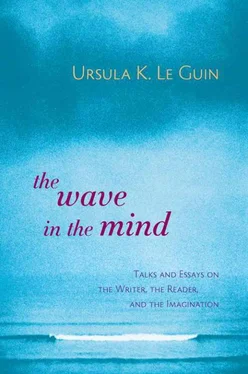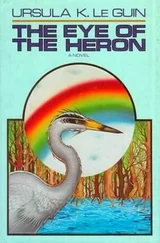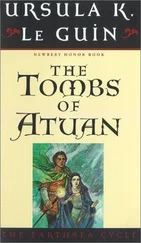AUTHOR GENDER
Summations
(see Details of the Counts and Awards, below)
— General fiction: 192 men, 167 women: slightly more men than women.
— Genre fiction: 208 men, 250 women: more women than men
— Children’s books and young adult: 83 men, 161 women: twice as many women as men
— All genres: 483 men, 578 women: about 5 women to 4 men.
Eighty of the authors in my Genre category were romance writers, all women; if you consider them as probably balanced by predominantly male-written genres such as sports, war, and porn, which I did not have figures for, you might arrive at parity. It looks as if, overall, as many women as men, perhaps slightly more women than men, write and publish novels and stories.
Author gender in fiction is pretty near 1:1.
Now for the gender counts and ratios for literary prizes. Ideally I would have listed the shortlists or runners-up where available, but given the shortness of time in which I had to prepare this paper, and the shortness of life, I list only winners. (Information on most awards, including shortlists, winners, and sometimes jurors, is accessible at libraries and on the Net.)
The years covered are the years the prize has been given, up to 1998—these spans of course vary greatly. The oldest is the Nobel Prize in Literature.
I did not try to find out the gender composition of the juries of any of these awards, though many are on record. I wish I had the time to go into this and find out whether juries are gender balanced or not, whether the balance has changed over time, and whether gender composition influences their choices. One might well assume that men tend to pick men and women women, but if juries are even moderately balanced between men and women, my figures do not support this assumption. It looks as if men and women tend to pick men.
Most awards are chosen by a judge or panel of judges, but some genre prizes are voted by readers or (in the case of the Nebula Award) fellow writers in the genre.
(In this context I want to point out that the MacArthur “genius awards” are nominated by “experts” chosen by the MacArthur Foundation, and the winners are selected by a board chosen by the Foundation—a permanently secret board, whose members are therefore, in the true meaning of the word, irresponsible. In all the arts awards given by the MacArthur Foundation, I find the 3:1 gender ratio—three men to one woman—so consistent that I must assume it is the result of deliberate policy.)
GENDER RATIO OF LITERARY PRIZES, MALE TO FEMALE
(in order of most extreme imparity to nearest parity)
— Nobel Prize in Literature, 10:1
— PEN/Faulkner Award for Fiction, 8:1
— Edgar Grand Master Award (mystery), 7:1
— National Book Award (now American Book Award), 6:1
— World Fantasy Lifetime Achievement Award, 6:1
— Pulitzer Prize for Literature, since 1943, 5:1
— Edgar Award for Best Novel, since 1970 (mystery), 5:1
— Hugo Award (science fiction) (reader vote), 3:1
— World Fantasy Best Novel Award, 3:1
— Newbery Award (juvenile), 3:1
— Nebula Award (science fiction) (voted by fellow writers), 2.4:1
— Pulitzer Prize for Literature, till 1943, 2:1
— Edgar Award for Best Novel, till 1970 (mystery), 2:1
— Booker Prize, 2:1
SOME OBSERVATIONS
Though the number of men and women writing literary fiction is nearly equal, the “big” literary awards, Nobel, National Book Award, Booker, PEN, Pulitzer, give 5.5 prizes to men for every 1 to a woman. Genre awards average 4 to 1, so a woman stands a better chance of getting a prize if she writes genre fiction.
Among all the prizes I counted, the ratio is 4.5:1—for every woman who gets a fiction prize, four and a half men do; or, to avoid the uncomfortable idea of half-men, you can say that nine men get a prize for every two women who do.
Except in the Nobel, which gave three women prizes in the nineties, there was no gain in gender parity in these prizes during the twentieth century, and in some cases a drastic decline. I broke the figures for the Pulitzer into before and after 1943, and the Edgar Best Novel into before and after 1970, to demonstrate the most notable examples of this decline. There would have to have been a massive change in author gender, a great increase in the number of men writing fiction in these fields, to explain or justify the increasing percentage of male award winners. I do not have the figures, but my impression is that there has not been any such great increase; my guess is that the fifty-fifty ratio of men and women writing fiction has been fairly constant through the twentieth century.
In children’s literature, where by my rough count there are twice as many women authors, men win three times as many prizes as women.
Nearly two-thirds of mystery writers are women, but men get three times as many prizes as women, and since 1970, five times as many.
The inescapable conclusion is that prize juries, whether they consist of readers, writers, or pundits, through conscious or unconscious prejudice, reward men four and a half times more than women.
The escapable conclusion is that men write fiction four and a half times better than women. This conclusion appears to be acceptable to many people, so long as it goes unspoken.
Those of us who do not find it acceptable have to speak.
Literary juries and the sponsors of awards need to have their prejudices queried and their consciousness raised. The perpetuation of gender prejudice through literary prizes should be challenged by fairminded writers by discussions such as this, by further and better research, and by letters of comment and protest to the awarding bodies, to literary publications, and to the press.
DETAILS OF THE COUNTS AND AWARDS
This appendix is for people who enjoy details and want to see how my system of determining author gender and gender parity worked, or suggest how it might be improved, enlarged, and updated—a job I would gladly hand on to anybody who wants to undertake it…. And I have made some notes and observations on various outcomes and oddities.
Author Gender (Novels and Story Collections)
(MF indicates male to female)
“Literary” Fiction
— Hardcover: men 128, women 98. MF ratio 1.3:1
— Trade paperback: men 64, women 69. MF ratio near parity
“Genre” Fiction
— Mystery: men 52, women 72. MF ratio 0.7:1
— Romance: men 0, women 80. MF ratio 0:1
— Western: men 60, women 22. MF ration 3:1
— Fantasy: men 39, women 40. MF ratio near parity.
— Science fiction: men 57, women 35. MF ratio 1.6:1
“Juvenile” Fiction
— Children, age 6–12: men 80, women 117. MF ratio 0.7:1
— Young adult: men 23, women 44. MF ratio 1:2
Summary
— “Literary” fiction: men 192, women 167
— “Genre” fiction: men 208, women 249
— “Juvenile” fiction: men 103, women 161
These categories, derived from my reference sources, should be taken with extreme distrust, which is why I put them in quotes. Genre, as generally understood, is itself a suspect concept. Many of the books could well have been listed in two or even three categories.
Total Count of Gender of Authors of Novels and Story Collections
— Total authors: 1,080
— Men 503, women 577
— Approximate MF ratio 5:6
Author Gender in Awards Given to Novels and Story Collections
The Nobel Prize in Literature (voted by a special board)
Between 1901 and 1998, the prize was given 91 times (it was not given 7 times, notably during World War Two). It has been split twice between two men and once between a man and a woman, so that the totals have decimals.
Читать дальше



